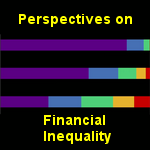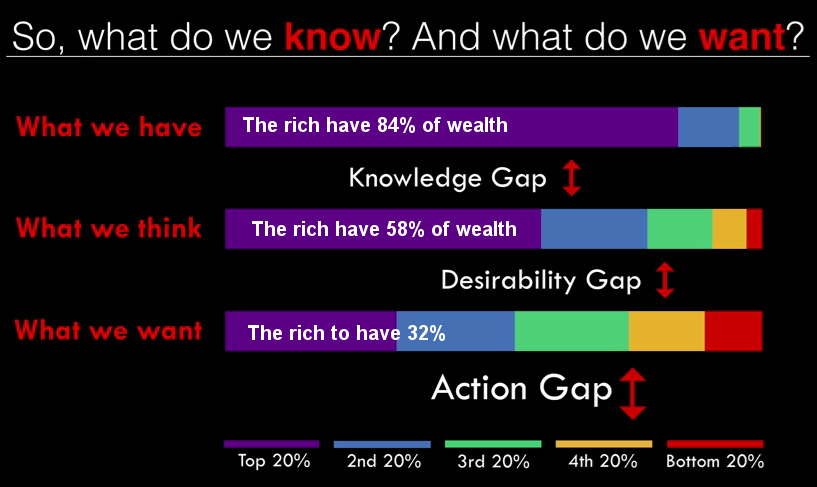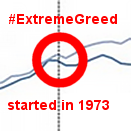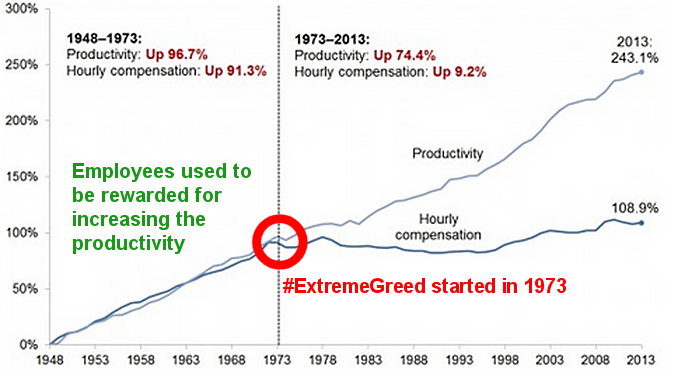 What we think we know is often incorrect or optimistic. Take financial inequality as an example.
What we think we know is often incorrect or optimistic. Take financial inequality as an example.
We think the rich have 58% of the wealth, but actually the rich have 84% of the wealth. And what do most people think the rich should have? 32%. We don’t expect equal distribution of wealth, but we want it to be much more fair than it is.
These estimates hold true for all sorts of people: liberals and conservatives, professors and laborers, men and women. We all underestimate how rich the rich are, and we all want them to have a smaller, and more fair, piece of the economic pie.
How to bring about a more fair economic situation is, as TED speaker Dan Ariely calls it, the Action Gap.


 1973 marked the beginning of
1973 marked the beginning of 